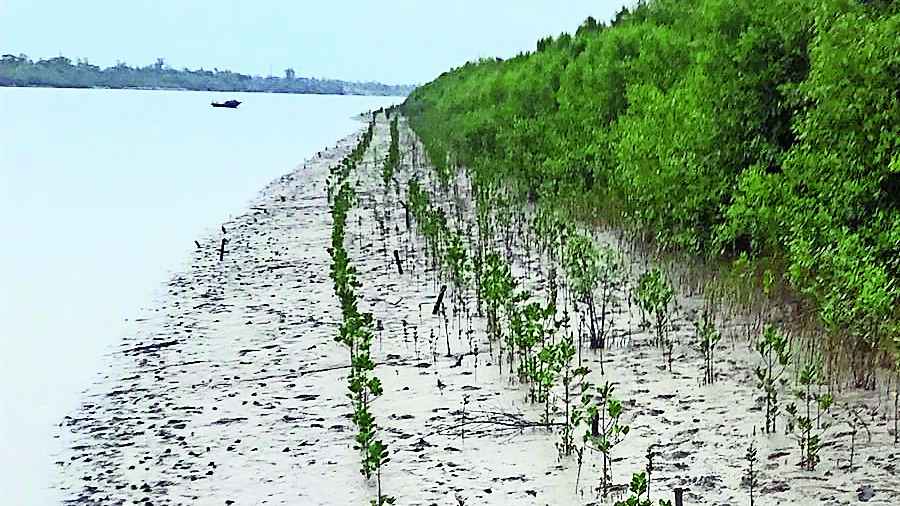More than 3,500 hectares of mangrove plantation have been done in the Sunderbans by the forest department in order to protect the delta from soil erosion as well as storms and cyclones.
Large swathes of mangroves had got damaged in the Sunderbans when Cyclone Amphan struck. Other factors like cutting down forests to make way for pisciculture ponds and farming fields have also played a part in this.
According to a senior officer of the forest department, many tens of thousands of migrant labourers had returned to the mangrove delta during the Covid-induced lockdown. Many of them took to an alternate livelihood. Some started farming and fishing in local ponds on a small scale and to make way for these large swathes of mangroves had been cut down leaving the area exposed to the vagaries of storms as well as soil erosion.
According to another senior official, they have covered 3,659 hectares in six coastal blocks of Sunderbans under the South 24-Parganas division alone.
The department had roped in the help of joint forest management committees and local women to plant mangrove saplings. According to an estimate, by end of this year around 17.5 lakh saplings will be planted.
At Bhuvaneswari, the forest department has reclaimed a 100-acre plot that had been turned into a fishing pond and filled it with mangrove saplings.
Milan Mondal, the divisional forest officer of South 24-Parganas, said their efforts were paying off as the villagers themselves have realised the importance of the mangrove cover after the Sunderbans was lashed with back-to-back cyclones, including Amphan and Yaas.
“The coastal villages bore the brunt in those areas where the mangrove cover had depleted badly. Now, the villagers themselves are looking after the saplings,” Mondal said.
Mangroves are known for viviparous germination where seeds germinate and develop into saplings while still attached to the parent tree. With favourable conditions, they can form a colony at a rapid rate.
In areas like Lothian Island, G Plot and Frasergunj, mangrove saplings have been planted on as many as 230 acres to form coastal shelter belt protection.
In the process of planting the mangroves, the forest department has also managed to generate employment for more than 12,500 villagers.
All kinds of mangrove species commonly available in the Sunderbans are being planted under the project.
